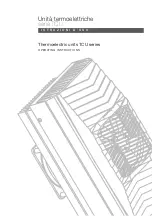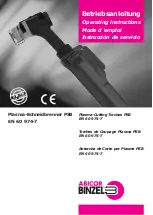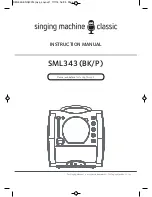
Immediately control through the “Flame vis” window clap that the bottom and the
sides of the burning chamber are not reddening. (use an electrical flash light do do
this visual control).
If the burning chamber has an area coming red, reduce the flame length (see
burner doc.) and/or the fuel angle jet. Repeat these operations until the burning
chamber has no more overheated areas.
Control that fumes temperature is between 150°C minimum and 300°C maximum.
(except for condensing heating cabinet for which fumes temperature can drop down
to 100°C).
IMPORTANT :
For non condensing cabinet, if fumes temperature are under 150°C, there is a high risk to
see condensation occurs in the exchanger, and even in the burning chamber. This can
damage seriously the heating cabinet.
OVERHEATING PROTECTION DEVICE (Reminder chapter 10)
As per EU regulation 90/396/CEE, Aquitaine heating cabinet are delivered with a safety
overheating limit device : A thermostat stop and lock the gas inlet in any case of averheating.
This thermostat proceed to the stop when air > 90 °C and if the airstat dysfunccioned (fitted
from factory at 75°C).
In any case of safety overheating thermostat release (at start up or in the following days) :
-
Control that the burner power is in line with the Heating cabinet power. If
necessary, redo the burner adjustment (see IOM burner) and in case of doubt it
preferable to reduce the burner power.
-
Check that a general electrical blackoiut did not occur (as example during the night
- general electrical network break), because this forbid the post refreshment of the
burning chamber / exchanger and consequently the big quantity of calories stored
in the exchanger is not blown away. This generate a sudden temperature increase
and obviously the safety overheating thermostat will react.
-
It is also possible that the duct (because of its geometrical feature) or for an
horizontal heating cabinet, causes the containment of the overheating thermostat in
an area where air speed is too low. Then, it will be necessary to remove this
thermostat and place it in a better air flowing area of the duct.
Observe well the duct shape in order to try to identify the risk that the overheating
thermostat would be located in an area badly irrigated.
Restart of the heating cabinet :
- Find and eliminate imperatively the cause(s) of overheating
- Unlock the overheating thermostat (cycle will restart automatically).
In any case of doubt – contact our Service
Feel the commissioning recapitulation sheet (see last page of this
notice) and add the combustion analysis ticket.
Give this notice to the user in order that it will be available for any
maintenance in the future.
20









































